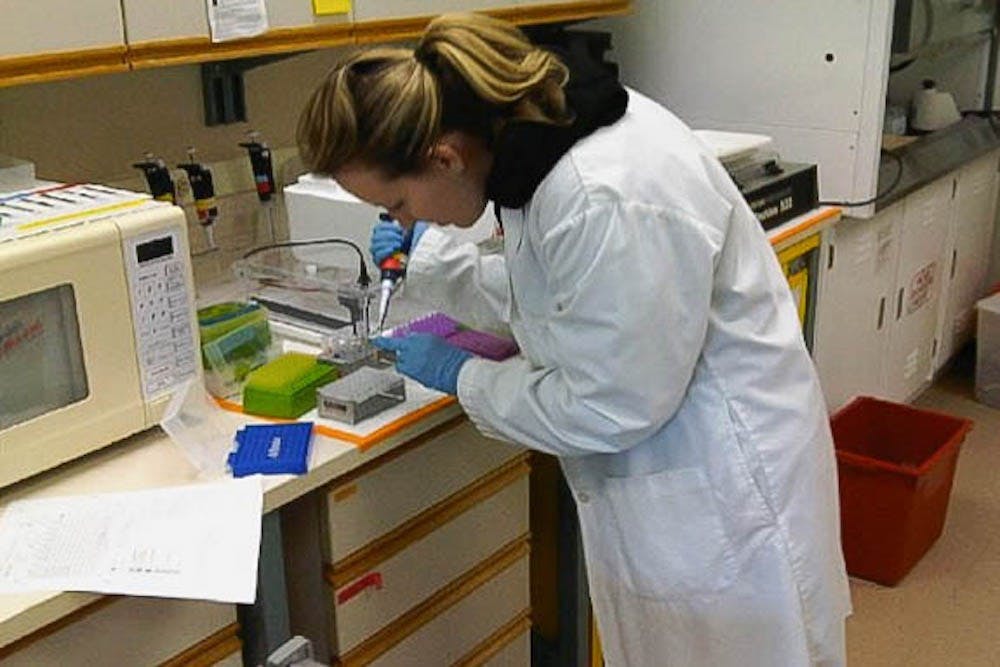A program based at ASU embeds socially conscious scholars into research laboratories around the world to cultivate responsible innovation through interdisciplinary collaboration.
Referred to as embedded humanists, these scholars from the Socio-Technical Integration Research program conduct observation studies to help researchers understand the immediate and long-term impact their work can have on the environment and society.
These conversations between scientists and social scholars develop around nanotechnology, genetics, biotechnology, synthetic biology and other scientific fields. The embedded humanists also participate directly by helping researchers with their work.
Erik Fisher, an associate professor in ASU's School for the Future of Innovation in Society, is the founder of STIR and the director of the the STIR Cities project.
“(Embedded humanists) not only observe the scientist to extract information, but can dialogue in such a way that the scientists now start thinking like humanists,” Fisher said.
Embedded humanists usually include political scientists, anthropologists, sociologists and philosophers, but Fisher said there is a growing number of biologists, engineers and other members of the scientific community that are being trained in the STIR method.
“The goal is to empower scientists and engineers to think more reflexively, more socially and more ethically about how their work can benefit society,” Fisher said.
Shivam Zaveri, a doctoral student in ASU's Human and Social Dimensions of Science and Technology program who is preparing to work as an embedded humanist, said scientific research has provided many solutions to social issues throughout history.
“We can do what we call responsible innovation in an industrial setting," he said. "You could do it in a lab setting or it can be in a startup setting."
But Zaveri said society must indefinitely grapple with the social issues that come with some scientific advancements.
For example, according to a project by Oxford University, advancements in medicine have led to global life expectancy more than doubling since the 1900s, with a dramatic decrease in infant mortality rates. But while these are positive advancements, they are also components of global issues like overpopulation and resource strains.
The internal combustion engine revolutionized the way people travel and the technology is a commodity for millions of people around the world. But reliance on fossil fuels can lead to conflicts among nations and contributes to global warming.
But it can be difficult for social scientists to integrate themselves in lab settings, so building a rapport with researchers is important, said Shannon N. Conley, assistant professor in the Department of Integrated Science and Technology at James Madison University and an ASU alumna. She worked as an embedded humanist in reproductive genetic laboratories in Canada and the United Kingdom while she was pursuing her doctorate at ASU.
Conley said the researchers she worked with in the STIR program asked more questions about ethics and the role social sciences should play in research as she earned their trust.
“We really had an opportunity to step into each other’s worlds. Getting to listen to their concerns was very informative,” Conley said.
In 2011, Conley wrote an article emphasizing the importance of individuals who intelligently work and communicate across several disciplines, “as advances in science and technology continue to outpace regulatory and policy efforts.”
Conley said she works to instill in her students the lessons she has learned from the STIR project as part of James Madison University’s own efforts to integrate social science into research practices.
“Technology is not created in a vacuum,” Conley said. “We need to be proactively thinking about the impact of our technology before it enters the market, or if it's scientific research, we need to think about its impact before it's implemented.”
But Fisher said many researchers are still reluctant to allow people without a scientific background into their labs, however a growing number are starting to embrace STIR.
However, “after a few weeks they really start to appreciate the rigor of our method and how it can enhance their research process,” Fisher said.
Fisher studied the scientific method while creating the STIR method and added steps to account for ethical questions and concerns the public might have about the research being conducted, as well as legal challenges research might face.
Conley said the researchers she has had the opportunity to work with were open and welcoming, even though they were hesitant about the program at first.
“The embedded humanist has to have a collaborative disposition. You can’t go in thinking you know all the answers. It’s about shared inquiry,” Conley said.
Reach the reporter at jicazare@asu.edu or follow @sonic_429 on Twitter.
Like State Press on Facebook and follow @statepress on Twitter.




